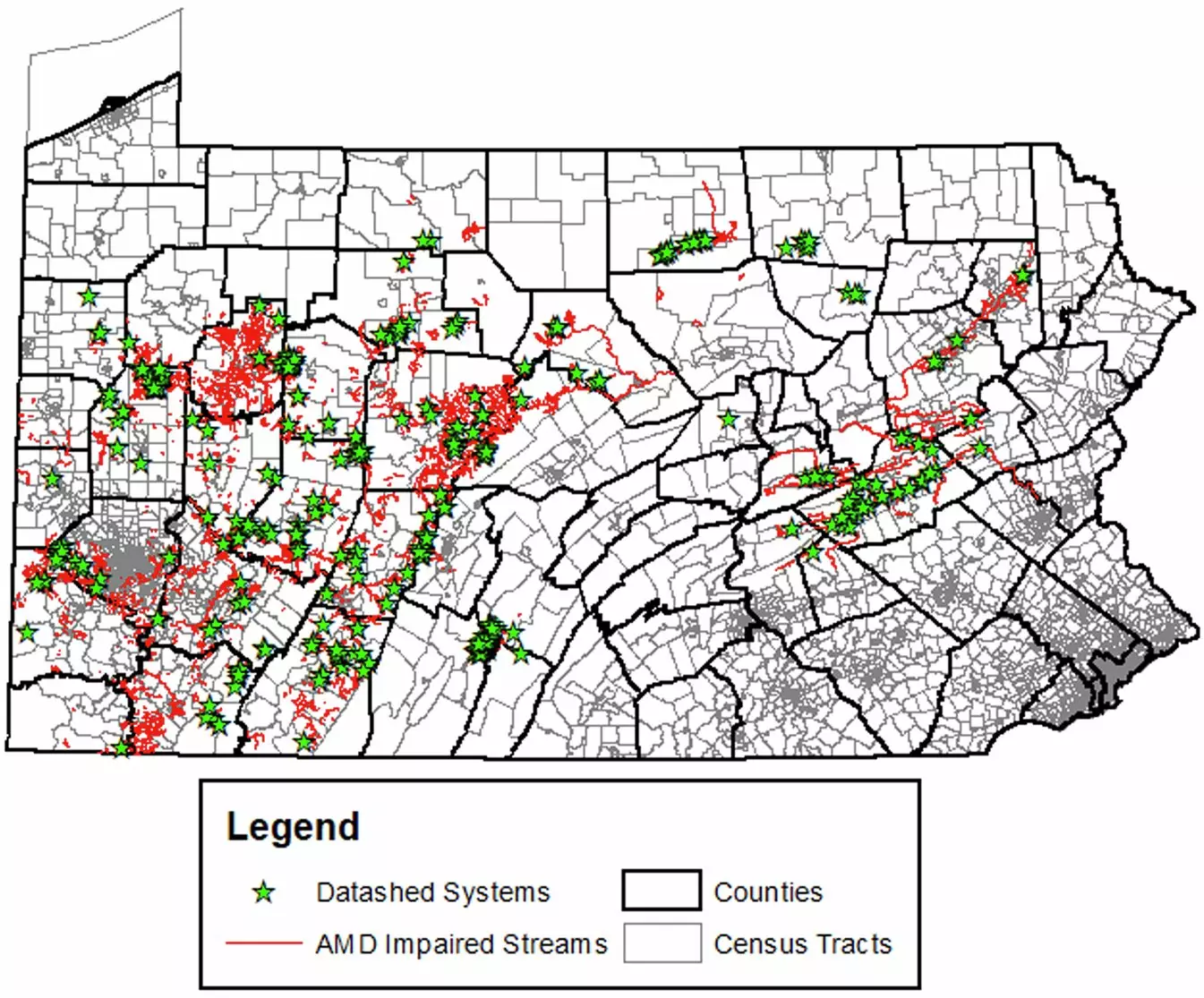The legacy of past industrial activities, particularly in coal mining, has left Pennsylvania grappling with extensive environmental issues, the most pressing of which is abandoned mine drainage (AMD). A recent study from the University of Pittsburgh highlights the critical need for federal and state funding to effectively treat this pervasive problem. Despite the historical financial efforts that have led to the establishment of over 300 treatment systems, it is evident that current appropriations are insufficient for comprehensive long-term solutions. The ramifications of this oversight extend not only to the environment but also significantly affect the vulnerable communities residing near these polluted waterways.
The research stipulates that communities near polluted streams tend to face economic hardships. Findings reveal that populations living in areas impacted by mine drainage earn approximately 30% less than those in unimpacted areas. This discrepancy in income is exacerbated by the economic shifts toward cleaner energy sources, which disproportionately challenge these communities. The transition has created a complex web of economic dislocation and environmental degradation, indicating that residents not only contend with the direct health impacts of AMD but also with the broader economic instability that follows. It is a double burden that raises vital questions about equity and justice in environmental policies.
According to the study, around 2.4 million people in Pennsylvania—approximately 18.5% of the state’s population—are affected by streams impaired by AMD. Moreover, the grim reality is that nearly half a million residents live in areas where a majority of streams are compromised. This degradation can lead to dire consequences for public health and local economies, illustrating an urgent need for environmental restoration and economic revitalization.
The analysis of treatment systems reveals a mixed picture. While the existing systems show effectiveness—improving water quality from an average pH of 4.3 (akin to that of tomato juice) to near-neutral pH levels—the collective need for improvement remains overwhelming. With nearly 6,500 miles of streams requiring attention, the state is perpetually fighting an uphill battle against both AMD and other hazards stemming from abandoned mines, such as sinkholes and unsafe mine shafts.
The financial costs associated with these clean-up efforts are staggering. The study suggests that Pennsylvania will require approximately $1.5 billion to address immediate AMD issues over the next 25 years. However, an additional $3.9 billion is necessary to manage related hazards that do not directly involve mine drainage. Such figures illuminate the gravity of the challenges facing both policymakers and communities reliant on these ecosystems.
Notably, legislative efforts such as the 2021 Infrastructure and Investment and Jobs Act (IIJA) have allocated $16 billion to remediate abandoned mines, an unprecedented funding surge. However, the distribution and effectiveness of these resources remain uncertain. The research underscores that the direction of this investment is crucial; it emphasizes the need for targeted initiatives that genuinely serve the communities most afflicted by AMD and the intertwined economic challenges.
Moreover, the reallocation of funds must ensure that future clean-up efforts do not merely treat symptoms but also address root causes—facilitating job retraining and fostering sustainable economic growth in these localities. Ensuring that communities engage in this redevelopment will empower them and help mitigate the socio-economic disparities exacerbated by legacy pollution.
The study from the University of Pittsburgh illuminates the dire need for both immediate and strategic approaches to tackle AMD and its socio-economic impacts on vulnerable Pennsylvania communities. As authorities navigate this challenging landscape, the focus must shift to implementing comprehensive solutions that blend environmental restoration with economic resilience. While the federal investments present a significant opportunity, their efficacy hinges on smart, equitable deployment—one that places affected communities at the forefront of the recovery narrative. Ultimately, addressing the historical injustices linked to abandoned mines is not just an environmental imperative but a moral one.


Leave a Reply